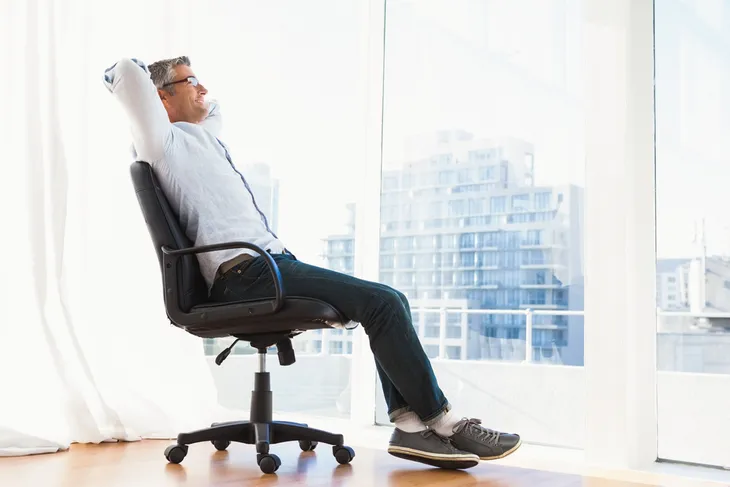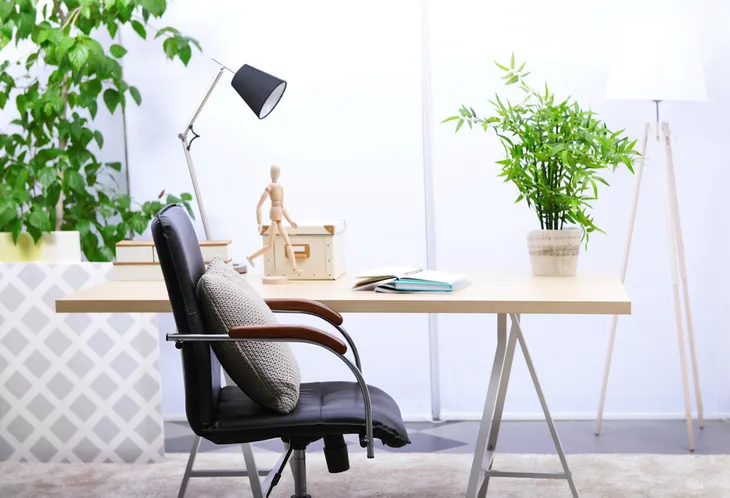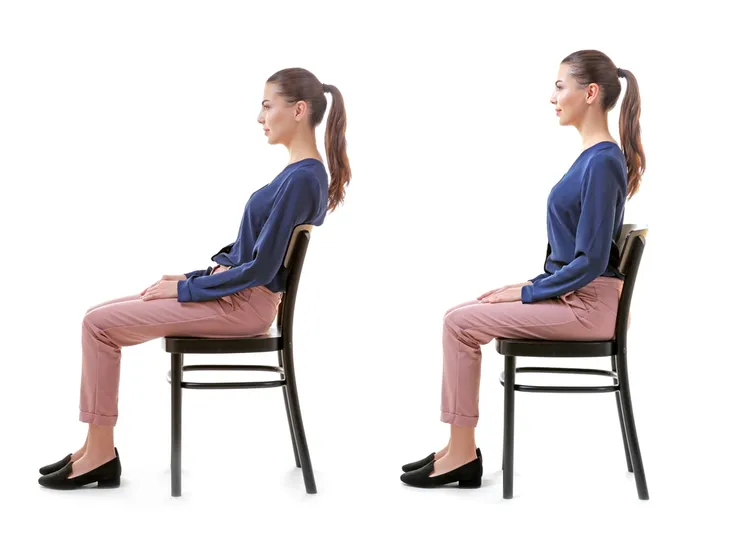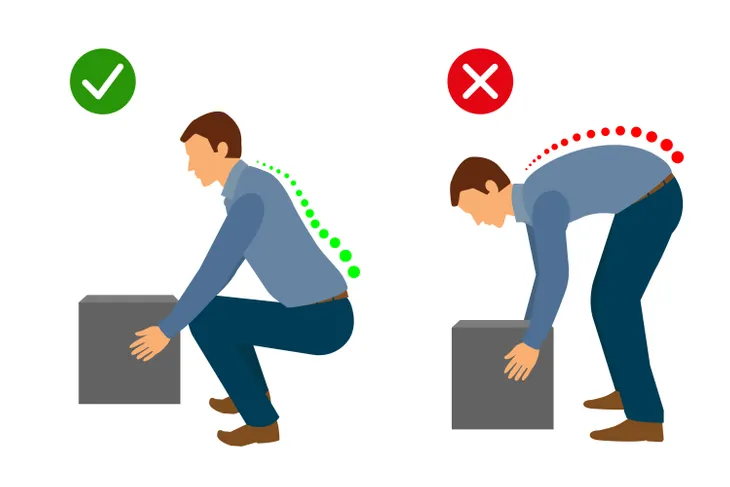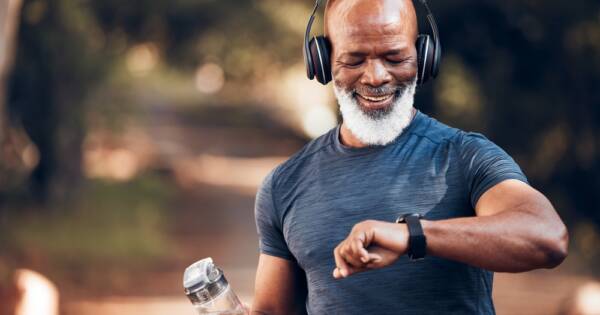Your body posture can make a big difference in your overall health. Incorrect posture can lead to mental and physical duress, with symptoms such as neck and shoulder pain, back pain, headaches and migraines, poor sleep quality, and eye strain. Proper posture can improve digestion, blood circulation, all while making you feel younger and more energetic.
Proper posture is important not only for standing, but sitting and laying down as well. Many people spend the majority of their day sitting, be it at a desk, in their car, and on their couch. Sitting for too long can impact the pressure on your spine, causing poor posture. It is even more important to strive for healthy posture if you have a desk job.
Here are 15 easy ways to perfect your posture and get you feeling and looking healthy.
Take Breaks From Sitting
Sitting for long periods of time can stress your spine, leading to curvature and slouching. Stretch your body by taking regular breaks. Standing up and walking for just 5 minutes can rejuvenate your body and keep you from back strain. This action can be as simple as getting a glass of water or going to the washroom.
Light stretching can also help loosen up tight back muscles that occur with sitting for too long of a period.
Exercise Regularly
Regular exercise can play a big part in your overall posture. Strong core muscles will help support your upper body, letting you easily maintain a straight back. Posture during exercise is also important. Incorrect positioning while lifting weights can cause serious energy.
If you are looking at getting more exercise, consider hiring a personal trainer. These professionals can help you identify the correct body positions to minimize strain and injury, while maximizing your workout.
Have An Ergonomic Assessment
In large offices, ergonomic assessments are sometimes available. A professional ergonomist will measure your workstation and where you fit with the equipment. They will then let you know the changes you can make to optimize your workplace experience.
If your office does not offer this service, there are online questionnaires that can help you identify changes you can make. Some common changes that make a big difference in your posture are chair height and computer monitor angle.
Use A Chair Pillow
Lower back support is important when sitting for long periods of time. Many high end computer chairs offer multiple layers of back support. If you do not own a chair with back support, you can supplement the action with a small pillow. Place the pillow in the small of your back and lean against your chair. It should support the gap between the chair and your lower back.
Find Your Ideal Sitting Position
Previous schools of thought believed that sitting completely straight was the best position for proper posture. New discoveries have shown that this position can actually place extra strain on the spine. Leaning back can be the most comfortable position for your body.
Find the position you are most comfortable in but make sure that your spine is relatively straight. Slouching shoulders should be minimized.
Change Your Pillows
Your position when you sleep can make a big impact on your posture. Pillows can make a big difference in both your head position and spinal position. Choose a pillow suited for which style you sleep in- moulded and medium support for back sleepers, firm support for side sleepers, and light support for stomach sleepers.
If you sleep on your side, also consider tucking a pillow between your knees to straighten out your spine.
Maintain Your Mattress
The quality and age of your mattress can affect your posture. An old mattress in disrepair can put pressure on different points of your body. If you have an old mattress, you can easily extend the life and comfort by adding on a memory foam topper. This special foam cradles your body, evening out the weight and pressure.
If you have a spring mattress, check to see if you should be turning and flipping it to even out the ware patterns.
Adjust Your Car Headrest
If you have a long commute, you can adjust your car to promote good posture. Your headrest should come up to the center of your head. The angle should be parallel with your neck and head. It should be placed 3-4 inches behind your head. Some cars have headrests that cradle the head in a much closer position. Insure you adjust your mirrors to make it easy to see the road without having to put your neck in a painful position.
Adjust Your Car Seat Position
Your seat position in your car will also make a big difference in your posture. Slide the seat so that you are an ideal distance from the pedals. You should not have to stretch to reach them, but you also don’t want your knees hitting the steering wheel. Adjust the angle of the seat so that you are comfortable and can easily see the road. Putting it too far back can be dangerous as you may not be able to see around the car for traffic.
Keep Your Head Back
Throughout the day you may notice that your head creeps forward and is no longer in position with your spine. This can happen by reading, looking at the floor as you walk, and incorrect computer monitor positioning. Whenever you notice your head in this unnatural position, make a conscious effort to straighten your back and neck. Keeping a sticky note with a reminder and post it on your desk or computer for extra motivation.
Use Balloon Imagery
As you go about your day, imagine a balloon tied to the top of your head. This will help tighten your back muscles and pull your head high. You should feel taller and more confident. Practicing perfect posture can be a sore experience as you will be utilizing muscles that have been relaxed for many years.
It will take a number of weeks to break bad posture habits and for you to feel comfortable with a straight back.
Stretch
Regular stretching can help loosen up tight back muscles that prevent you from having perfect posture. One exercise can be of great benefit to sore neck and shoulders. Tilt your head in all directions and feel the stretch in your shoulders and back. Resist rolling your neck and shoulders as this can strain the muscles further.
Massages can also help, be it from a professional or a significant other.
Practise Yoga
Yoga is an amazing stretching exercise that can help with posture. Yoga can improve your core muscles, your balance, and body alignment. This practice can help you get in touch with your body. You will learn to listen to the different pains you experience and you will know how to remedy them with stretches and positions.
Let your yoga teacher know that your goal is to perfect your posture and they will further guide you with extra movements to achieve this goal.
Lift From Your Knees
Injury can be a major cause of poor posture. Back strain can leave your muscles tightened and give you a slouched appearance. Prevent injury by learning the safe way to lift heavy items. You should always lift with your knees, much the way toddlers lift their toys. Resist bending at the waist and through the back.
If you have previously injured your back, or need to lift many different items, consider wearing a supportive back belt.
Consult Your Doctor
If you have previously injured your back, always check with your doctor or a chiropractor before you try and perfect your posture. Some injuries, like a slipped disk, can be further exacerbated with stretching and exercises. Your doctor may provide extra tips based on your health.
Losing excess weight can take extra strain literally off your shoulders. If you see a chiropractor, they will be able to help stretch your back to give you better posture.


